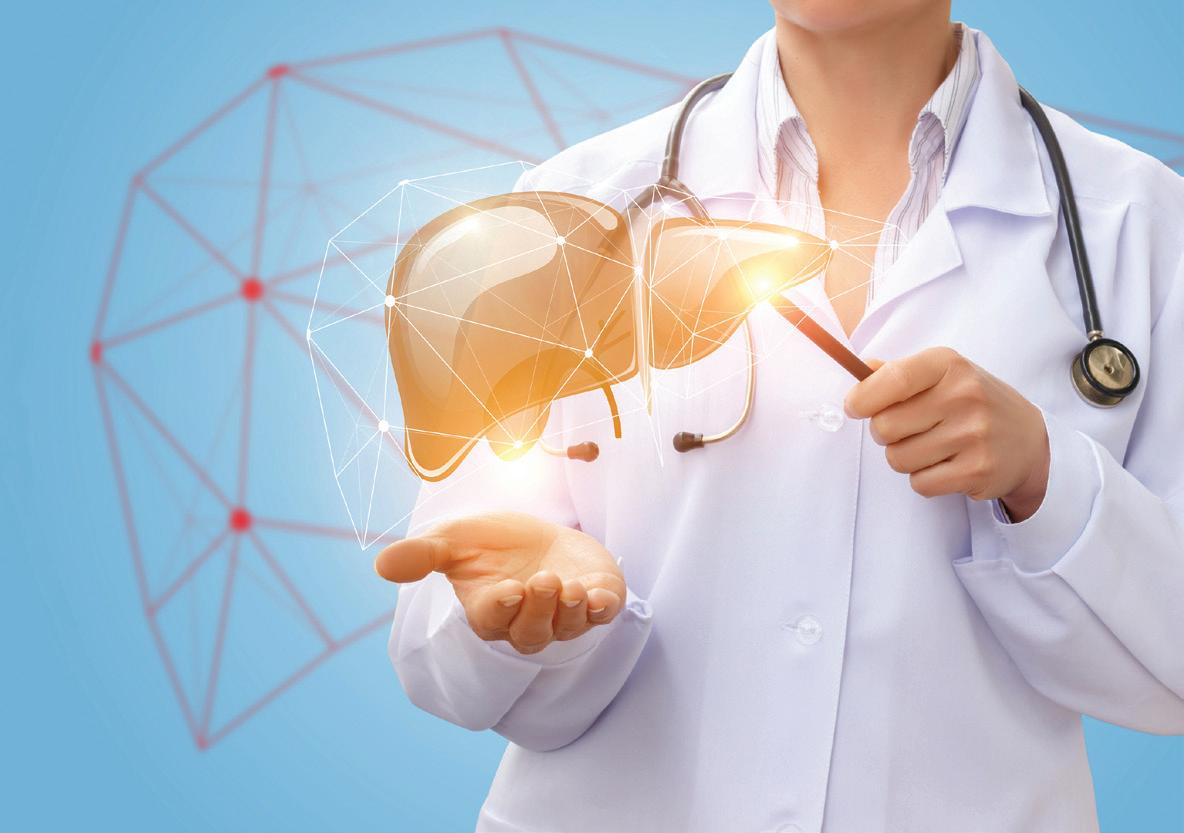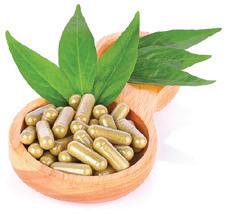
12 minute read
Do You Love Your Liver?
Love YOUR Liver? DO YOU

Advertisement
Tips to take care of your body’s superhero
by Holly Lucille, ND, RN
Your liver is a remarkably efficient organ, silently performing over 500 different functions each and every day—and that could be one reason you don’t give it much thought. Maybe you should. The liver’s most important tasks include helping the body to digest fats, regulating energy, and storing nutrient reserves. But perhaps the most remarkable thing about the liver is that it’s the only organ that can grow new cells that have been destroyed by injury or disease.
Taking Out the Trash
The liver’s best-known role is that of garbage collector. In a world filled with toxins, it’s the liver’s job to breakdown the contaminants that come our way and get them ready to be escorted out of the body. Ideally, the liver would be able to process all of the toxins we encounter. But
22 because of the sheer volume of industrial chemicals and pollutants we are exposed to in our food, air, and water, the liver’s detoxification mechanism can have trouble keeping up. What’s more, there are voluntary toxins we willingly expose ourselves to in cigarette smoke, alcohol, junk food, medications, household cleaners, and personal care products. This constant barrage of chemicals can make our livers vulnerable to a number of conditions that can ultimately undermine our overall health.
Going Through Phases
Neutralizing these toxins and shuttling them out of the body requires two detoxification pathways known as Phase I and Phase II reactions. In a nutshell, Phase I is equivalent to putting your garbage in a bag and Phase II is like carrying it out of the house. Here’s how it works:
PHASE I:
Phase I enzymes transform fatsoluble toxins into less harmful water-soluble molecules that are bound to bile, a compound produced by the liver.
PHASE II:
Once the toxins have been broken down into more benign compounds, they are escorted out of the body during this secondary phase. But this phase of liver detoxification can be compromised by nutritional deficiencies, alcohol consumption, and a low-protein diet.
Supporting both Phase I and Phase II detoxification pathways with a healthy lifestyle and liver-loving supplements can increase the body’s ability to eliminate the contaminants we are exposed to every day.
Liver-Supporting Supplements Because the liver is constantly called upon to accomplish these superhuman tasks, it’s critically important to give it continual nutritional support. The following herbs not only help optimize overall liver function, they also specifically support the organ’s detoxification mechanisms.

Andrographis may not be top of mind when it comes to liver health, but it’s an herb that has long been used in Ayurvedic and Traditional Chinese Medicine to treat a variety of liver ailments. A study published in the journal PLOS ONE shows why. The study found that the key compound in andrographis, called andrographolide, was just as effective as silymarin for reducing the harmful effects toxins can have on the liver. Other recent preliminary studies suggest that andrographis may have a protective effect against non-alcoholic fatty liver disease. The botanical compound also stops the over-proliferation of liver cells that can lead to cirrhosis.
Another way that andrographis stops liver damage and toxicity is by boosting the activity of some of the most powerful antioxidants your body can generate. Specifically, these include glutathione, superoxide dismutase (SOD), and a protein called Nrf2 (pronounced “nerf-two”).
Interestingly, earlier research with andrographis found that andrographolide was not the only effective compound from the plant for liver protection. Like many botanicals, it is important to get the full complement of active compounds. One of the best ways to achieve this is to check supplement labels for EP80, which ensures the herb is standardized to 80 mg per dose and provides both leaf and stem extracts with differing— but effective—compound profiles.
Milk thistle extract is perhaps the best-known herb for liver support. This botanical’s most active compound is silymarin, a polyphenol with powerful antioxidant activity that scavenges damaging free radicals. Milk thistle also boosts the activity of the body’s own antioxidants such as glutathione. In addition, studies suggest that this detoxifying herb inhibits inflammation, stimulates new liver cell production, and prevents glutathione depletion.

Milk thistle may also play a key role in maintaining the integrity of liver cell membranes, helping them resist penetration by toxins. In one clinical trial published in the DARU Journal of Pharmaceutical Sciences, gas refinery workers chronically exposed to hydrogen sulfide were given 150 mg of silymarin three times daily. After 30 days, researchers found significantly lower levels of the toxin and a marked improvement in liver function. Several other studies conducted by the Center for Cancer Causation and Prevention at the AMC Cancer Research Center in Denver have found that milk thistle helps protect against heavy metals and other environmental toxins. Additional research has highlighted milk thistle’s ability to counteract acetaminophen, alcohol, and toxic mushroom poisoning. According to yet another study, milk thistle may also protect the liver from toxic chemotherapeutic compounds.
Habits for a Healthier Liver Reducing the number of toxins your liver is exposed to and adopting the following good-for-you lifestyle habits can help keep your liver healthy and functioning optimally.
Eat liver-friendly foods. Your diet, while a potential source of contaminants, can also support liver health if you choose foods that are naturally About the size of a football, the liver is the largest internal organ in your body. Divided into two lobes, it is located in the right upper quadrant of the abdomen, tucked under the lower right ribs beneath your diaphragm. It also extends up toward the left upper quadrant of the abdomen. The gallbladder sits just under the liver, along with parts of the pancreas and the small intestine. Together, these organs work with the liver to digest, absorb, and process food. MEET YOUR Liver

23 detoxifying. Topping the list are fresh fruits and vegetables—specifically sulfur-rich foods such as onions, garlic, and cruciferous vegetables like broccoli, Brussels sprouts, cabbage, cauliflower, and kale. One recent study at Hendrix College in Conway, Arkansas, found that the organosulfur compounds in garlic have a protective effect on the mitochondria in liver cells. And new findings in the journal Mutation Research
foods for your liver
Avocados help your body make the powerful antioxidant glutathione that encourages the liver to filter out contaminants.
Beets are high in flavonoids that help to neutralize free radicals and improve liver function.
Coffee has been found to protect the liver from disease, even in those who already suffer from liver issues like cirrhosis. Drinking coffee may also reduce the risk of developing a common type of liver cancer.
Cruciferous vegetables like broccoli, Brussels sprouts, and cauliflower increase glucosinolates—organic compounds that encourage the production of beneficial digestive enzymes.
Garlic helps the liver activate enzymes that flush out toxins. This pungent herb is also rich in allicin and selenium, two nutrients that aid in liver cleansing.
Grapefruit helps the liver flush out carcinogens and other toxins. This tart fruit is also an excellent source of vitamin C and bioflavonoids that neutralize free radicals.
Green tea is packed full of antioxidants known as catechins that have been shown to enhance liver function.
Leafy greens like spinach and arugula have been found to help neutralize some heavy metals and industrial chemicals while acting as an overall liver protectant. focused on cabbage sprout’s ability to support both Phase I and Phase II detoxification.
When you choose your produce, pick organic whenever possible. Conventionally grown fruits and vegetables may harbor pesticide residue that, over time, accumulates in the body’s fatty (adipose) tissue. It’s also smart to choose organic or grass-fed meat and poultry as conventional options may be laced with growth hormones or antibiotics. And opt for low-mercury, wild-caught seafood to reduce contaminants often found in farm-raised fish.

For optimal liver health, it’s smart to consume alcohol in moderation. Alcohol can destroy liver cells and lead to damage that causes fatty liver, inflammation, alcoholic hepatitis, or cirrhosis. While current recommendations state that a man should drink no more than two drinks per day and a woman just one, it’s best to indulge no more than one or two drinks per week. If you have an existing liver condition, total abstinence is your best policy. DRINK WISELY.

LIMIT YOUR SUGAR INTAKE. Research shows that consuming too much refined sugar and highfructose corn syrup (HFCS) can cause a fatty buildup in the liver and may lead to NAFLD. Some studies even suggest that sugar is as damaging to the liver as alcohol—even if you aren’t overweight!


Be careful with the medications you take. Acetaminophen is notorious for its effect on the liver. According to one study, this over-the-counter pain reliever has been known to cause liver enzymes to increase threefold beyond the normal upper limit, which is a sign of possible liver damage. Unless needed, consider safer alternatives like curcumin, boswellia, or white willow bark. MEDICATE MINDFULLY.
Lemon is high in vitamin C. But it also helps the body eliminate toxins and aids in digestion.
Walnuts are high in glutathione and omega-3 fatty acids, which support the liver during detoxification.
Holly Lucille, ND, RN, is an author, educator, and television and radio show host with a medical practice in California. An acclaimed expert in the field of integrative medicine, Dr. Lucille has a heartfelt passion for the individual wellness of all people. Visit her website at drhollylucille.com.

HRG80 ™
Red Ginseng * — with —
Whole root red ginseng for full spectrum benefi ts
Delivers 7X more rare, noble ginsenosides, shown to be 17 times more absorbable †
Feel Energized Every Day! * Try HRG80 Red Ginseng Energy to
Ultra-clean process Grown without pesticides
ANIMAL HEALTH Inside
Good Health TM LIFESTYLES HABIT BREAK THE B A R K I N G B A R K I N G

by Carrie Donahue, DVM
xcessive barking can make the most loving pet parent, and their neighbors, cringe. Far from a behavior you have to “live with,” there are sound answers to stop the unnecessary barking. The first step is to explore what’s causing the behavior. E
FEAR. Is your dog subject to many loud noises, or do you sense they are protective of their territory when other animals are near? It may take training and reassurance to help your dog deal with the fear that their territory is being invaded. If your dog is barking because of everything they see out the window, shut the curtains. Nothing to bark at can equal no barking.
BORED. Dogs are pack animals. Being left alone can lead to loneliness. Ask your neighbors if they hear a lot of barking when you’re gone. Test your dog by leaving as usual, but sneak back to observe their behavior. Check your security camera to see what’s happening inside while you’re away.
Leaving some music or the TV on when you’re gone may help alleviate boredom for some pets. Another question to ask yourself, does my pet get enough exercise? A tired pet from adequate exercise and stimulation is less likely to bark from boredom. That may mean hiring a dog walker for a midday walk. Maybe you have a mini doggie-Einstein on your hands, and they need to think. Get your dog some puppy puzzles where they have to work to get a treat out or a squeaky, fun diversion. Create something interesting for your dog to do in your absence.
ATTENTION. No one likes to be ignored or taken for granted, and neither does your pet! Excessive barking may also provide your pooch a “feel good” adrenaline rush, a feeling they duplicate to self-soothe. Evaluate the amount of attention your pet receives, and make sure they are getting both quality and quantity time.
METHODS TO STOP BARKING Now that you know why your dog is barking, it’s time to take action. One thing that doesn’t work is to yell at your dog. The dog simply thinks you’re barking too! Instead, take a calmer, more methodical approach. Some schools of thought encourage a voice command of “quiet” and a hand signal like touching your finger to your lips. Others feel it’s more effective to not acknowledge the barking while it’s happening. Once it stops, pause, praise the non-barking behavior, and give a soft treat that can be eaten quickly. By slowly increasing the time a dog is quiet before getting the reward, you can retrain the
26 behavior. After this is working well, then add in a word like “quiet” and a hand signal. Consistency is essential for any training to work. Remember, dogs learn by repetition, dogs learn by repetition, dogs learn by repetition!
To support your dog’s overall trainability, turn to omega-3s sourced from salmon. Look for a chew that delivers DHA and EPA attached to phospholipids for superior absorption and peptides for brain support. This is a better choice than fish oil, which can have rancidity and toxins.
Another good idea for dogs who bark due to anxiety caused by separation, vet visits, or loud noises? Try a supplement that provides calming, brain-specific compounds found in a uniquely cultivated root extract of Echinacea angustifolia (EP107). Available in tablet form for dogs, it works quickly without making your pet drowsy. Incorporating these two supplements provides an added bonus for helping your pet with appropriate barking.
Carrie Donahue, DVM, is a holistic veterinarian and owner of Full Circle Holistic Veterinary Care in Madison, WI. Her mission is to improve the lives of companion animals by empowering pet owners to use a common-sense, holistic approach to health and well-being.
Tired Easily overwhelmed Muscle weakness Crave salty food Startle easily Less energy after exercise









